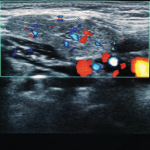As rheumatologists, we relish the thrill of diagnostic conundrums that accompany our immune-mediated multi-system and often undifferentiated disease processes. Many rheumatologic diagnoses are essentially diagnoses of exclusion. We’re accustomed to diagnosing iatrogenesis, infection and malignancy as often as we diagnose rheumatic disease. Complex clinical problem solving and critical reasoning are our forte, and to do…








